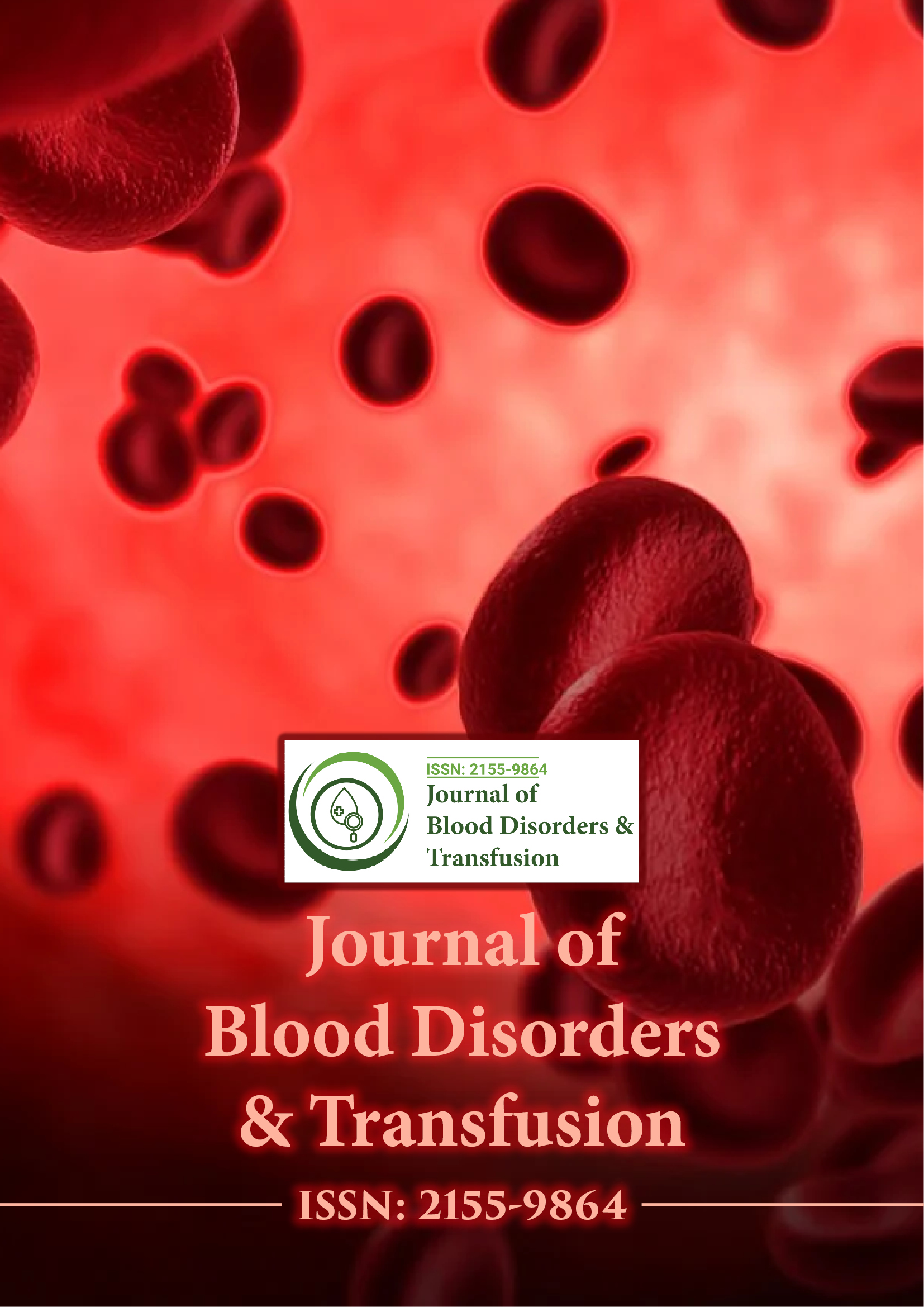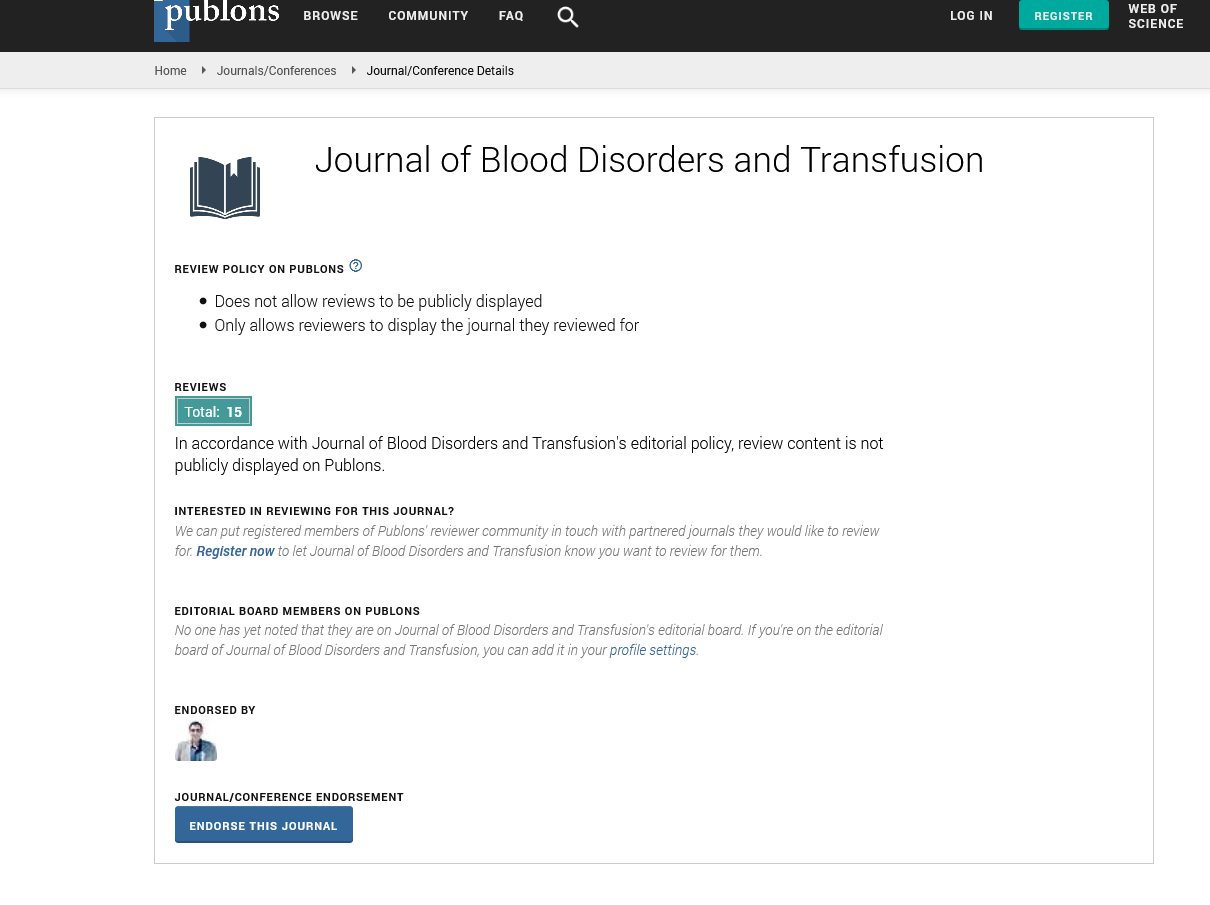Indexed In
- Open J Gate
- Genamics JournalSeek
- JournalTOCs
- Ulrich's Periodicals Directory
- RefSeek
- Hamdard University
- EBSCO A-Z
- OCLC- WorldCat
- Proquest Summons
- Publons
- Geneva Foundation for Medical Education and Research
- Euro Pub
- Google Scholar
Useful Links
Share This Page
Journal Flyer

Open Access Journals
- Agri and Aquaculture
- Biochemistry
- Bioinformatics & Systems Biology
- Business & Management
- Chemistry
- Clinical Sciences
- Engineering
- Food & Nutrition
- General Science
- Genetics & Molecular Biology
- Immunology & Microbiology
- Medical Sciences
- Neuroscience & Psychology
- Nursing & Health Care
- Pharmaceutical Sciences
Commentary - (2025) Volume 16, Issue 3
Longitudinal Trends and Outcomes in Patients with Low Platelet Levels
Fan Xu*Received: 28-Apr-2025, Manuscript No. JBDT-25-28999; Editor assigned: 01-May-2025, Pre QC No. JBDT-25-28999 (PQ); Reviewed: 15-May-2025, QC No. JBDT-25-28999; Revised: 22-May-2025, Manuscript No. JBDT-25-28999 (R); Published: 29-May-2025, DOI: 10.4172/2155-9864.25.16.622
Description
Thrombocytopenia, defined as a platelet count below the normal threshold, frequently occurs in critically ill patients and is associated with adverse outcomes. Platelets play a significant role in hemostasis and immune responses and their depletion can complicate the clinical course. Understanding the dynamic changes of platelet counts over time, rather than isolated measurements, provides deeper insight into patient prognosis. Platelet counts fluctuate during critical illness due to various factors, including infection, inflammation, medication and bone marrow suppression. Traditional approaches focus on single platelet counts or trends observed clinically. However, these methods might miss underlying distinct patterns within heterogeneous patient populations. LGMM is a statistical technique that groups individuals by similar trajectories over time, allowing for the identification of subpopulations with different platelet count courses.
Platelet counts in critical illness
In critical illness, thrombocytopenia arises from multiple causes: sepsis, Disseminated Intravascular Coagulation (DIC), drug-induced effects, or bone marrow failure. Platelet consumption increases due to endothelial injury and inflammatory cascades. Furthermore, impaired platelet production or destruction influences platelet numbers. These mechanisms cause platelet counts to vary significantly during ICU stays.
Low platelet counts are linked to poor clinical outcomes, including higher mortality and longer hospitalizations. However, platelet count recovery or persistence of thrombocytopenia may provide additional prognostic information beyond baseline measurements.
Latent growth mixture
LGMM enables classification of patients into latent classes based on their platelet count changes over time. Instead of assuming a uniform response, LGMM acknowledges the presence of distinct subgroups within the overall cohort. Each subgroup follows a different trajectory, characterized by initial platelet counts, rate of increase or decrease, and overall pattern shape. By applying LGMM to platelet count data collected at multiple time points during ICU admission, researchers can identify meaningful trajectory patterns and link them with outcomes such as survival or organ failure.
Identified trajectory patterns
Rapid recovery group: Patients showing low platelet counts at admission but quick normalization within days. This group often has a better prognosis and fewer complications.
Persistent thrombocytopenia group: Patients with sustained low platelet counts throughout the ICU stay. This group tends to experience higher mortality and more severe organ dysfunction.
Delayed recovery group: Patients with initially low platelet counts followed by gradual improvement over weeks. Their prognosis is intermediate between rapid recovery and persistent thrombocytopenia groups.
Declining platelet group: Patients whose platelet counts progressively decrease during hospitalization. This trajectory is associated with poor outcomes and may indicate ongoing bone marrow suppression or severe systemic illness.
Clinical relevance of trajectory patterns
Recognizing platelet count trajectories supports early risk stratification. For example, patients in the persistent thrombocytopenia or declining groups require closer monitoring and possibly more aggressive interventions. These trajectories can signal underlying processes such as ongoing infection, bleeding tendencies, or medication effects. Furthermore, trajectory patterns may guide transfusion practices. Patients with persistent low platelets might benefit from platelet transfusions, although the timing and thresholds remain subjects of clinical debate. Conversely, rapid recovery groups might avoid unnecessary transfusions, reducing exposure risks. Platelet trajectory analysis also offers a potential marker for evaluating therapeutic responses. Changes in the slope or pattern of platelet recovery could indicate effectiveness of treatments targeting infections or bone marrow function.
Integration with other prognostic tools
Platelet trajectories should be interpreted alongside other clinical parameters like organ function scores, coagulation profiles and inflammatory markers. Combining these factors could enhance prediction models for mortality and morbidity in critically ill patients. Multivariable analyses incorporating trajectory classes alongside established scoring systems such as APACHE II or SOFA may improve accuracy in forecasting outcomes.
Methodological considerations
Implementing LGMM requires longitudinal platelet data at consistent intervals, which may be challenging in some clinical settings. The choice of the number of latent classes is influenced by statistical criteria and clinical relevance. Overfitting or underfitting can misclassify patients, so model validation is important. Despite these challenges, LGMM offers a nuanced approach to analyzing complex clinical data. It accounts for individual variability and can reveal patterns missed by traditional methods.
Platelet count trajectories provide valuable information beyond single measurements in critically ill patients with thrombocytopenia. Applying latent growth mixture modeling allows identification of distinct patterns associated with clinical outcomes. These insights can enhance prognosis evaluation and support clinical decision-making in intensive care settings. Continued study of platelet kinetics and their relationship with patient status will contribute to improved care for this vulnerable population.
Citation: Xu F (2025). Longitudinal Trends and Outcomes in Patients with Low Platelet Levels. J Blood Disord Transfus. 16:622.
Copyright: © 2025 Xu F. This is an open-access article distributed under the terms of the Creative Commons Attribution License, which permits unrestricted use, distribution, and reproduction in any medium, provided the original author and source are credited.

